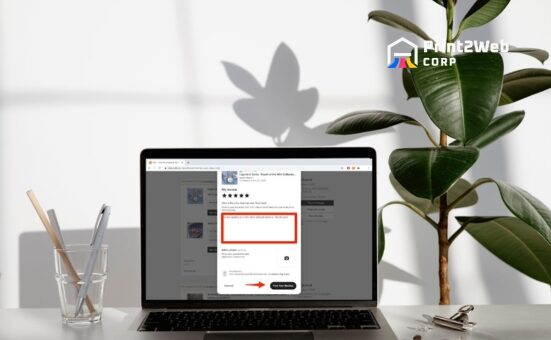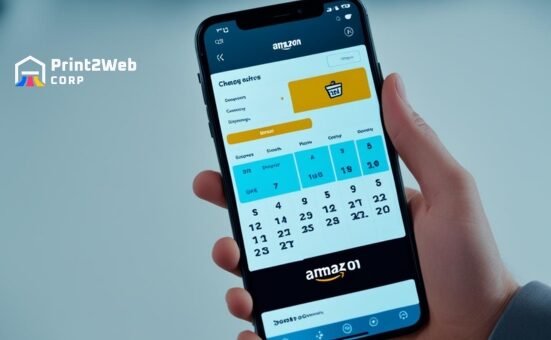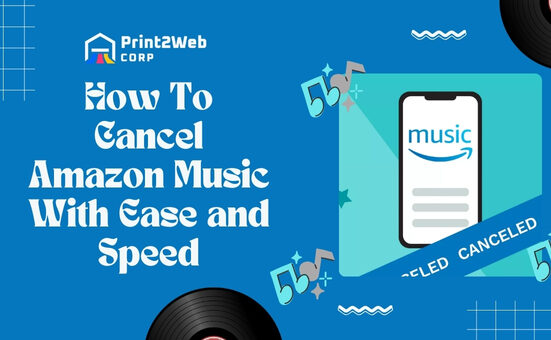Amazon return pallets can be a treasure trove for savvy shoppers and resellers alike, offering a world of hidden gems at a fraction of the cost. Imagine uncovering items that others have sent back, some barely touched or in mint condition, just waiting for you to claim them. It’s like going on a treasure hunt where the X marks a pallet full of potential profits. The concept is simple but thrilling: buy bulk returned goods from Amazon and sell them for a profit.
When it comes to What are Amazon Return Pallets? think of it as getting wholesale access to products that were once someone else’s purchases but didn’t work out for them. You get these goods en masse, typically at significantly lower prices than retail value. While some might need fixing up or repackaging, others are ready to go straight onto your shelves or online listings – ripe for resale.
What You’ll Gain From This Guide:
- Key insights into what Amazon return pallets actually are
- Steps on how to make smart purchases and avoid common pitfalls
- Tips on the best timing to score the most profitable deals
- Guidance on what to do once your treasure trove arrives
- Proven strategies for maximizing resale profits while minimizing risks
Understanding Amazon Return Pallets
In my journey investigating the world of e-commerce, I stumbled upon an intriguing concept – Amazon return pallets. Little did I know that these somewhat mysterious collections of merchandise could hold the potential for significant financial gain.

What are Amazon Return Pallets?
Amazon return pallets are large stacks of products returned by customers, which Amazon sells in bulk. This creates an opportunity to buy products at a considerable discount. These goods can range from electronics, clothing, toys, and even household items.
There may be various reasons for returns; sometimes, customers simply change their minds, or the product doesn’t meet their expectations. Other times, there might be minor damage or defects, which often can be repaired with little effort. Each pallet becomes a mix of everything; you never know what you might find!
Why Would You Want to Buy Amazon Return Pallets?
The beauty of purchasing these return pallets lies in the potential profits and cost savings:
- They offer a vast array of merchandise, often at a fraction of retail price.
- Many times, returned items are in good condition or only require minor repairs.
- There’s always demand in the market for discounted goods, providing ample reselling opportunities.
Purchasing Amazon Return Pallets
Getting your hands on Amazon return pallets can seem like a complex process. However, with the right knowledge and understanding, it can be simpler than you think.

How Much Do They Cost?
Amazon return pallets typically vary in price depending on what they contain. On average, the cost of these pallets might range anywhere between $100 to $1000. This is because the retail value of items within these returns can often exceed thousands of dollars. So, not only is this an affordable investment, but also potentially highly profitable!
What Do You Need To Know Beforehand?
Before you dive in, there are a few things you need to know about purchasing Amazon return pallets:
- Product Condition: Not all items in a return pallet are brand new. Some may be used or damaged, and others could just be customer returns because they didn’t like them.
- Reselling Legalities: It’s essential to understand that some brands don’t allow their products to be resold by non-authorized sellers.
- Financial Investment: While buying these pallets isn’t very expensive considering their potential value, remember it’s still an investment, and there’s always a risk involved.
This checklist should give you a clearer picture of what you’re getting yourself into.
The process to Purchase Return Pallets Online
Before diving into the specifics, it might be prudent for me to clarify what Amazon return pallets are. Essentially, they consist of items customers have returned, assorted into one package. These could range from electronics to household goods. The reasons behind these returns could vary significantly – wrong size, didn’t match the online description, or simply buyer’s remorse.
These packets often tend to cost less than retail price and therefore present a splendid opportunity for potential profits provided you approach this in an informed way. Henceforth, follow a concise guide on how one can purchase these return pallets from online platforms:
1. Procuring a Valid Resale Certificate
To start, gaining access to the world of resale online via Amazon return pallets requires one important document – a resale certificate. It acts as an authorization that permits you to purchase goods without having to cough up any sales tax. This is advantageous as it reduces your expenses and, by extension, increases potential profits.
The procedure to obtain this certificate varies from one place to another. Some regions may not even require it all. As such, familiarizing yourself with local laws governing reselling is crucial here.
2. Scouting for Trustworthy Liquidation Companies
Once you’ve armed yourself with a resale certificate, it’s time for some online window shopping for reputable liquidation companies. After all, they are the ones selling these customer returns.
While there are many options available online, such as Direct Liquidation and Bulq, doing your homework on which companies offer the best deals should be high on your priority list.
This involves gauging their credibility through customer reviews and testimonials or reaching out directly via the contact information provided on these websites.
3. Scrutinizing Listings and Item Conditions
Having identified a reliable company from where to buy these return pallets doesn’t mean throwing caution into the wind just yet. Yes, every return pallet comes at a lower price point, which certainly sounds enticing, but remember – there’s no guarantee regarding its contents’ condition.
For this reason, be sure to comb through every listing carefully and analyze the items’ conditions before making any purchase decisions.
These listings will often provide details about merchandise included in each pallet: their original retail value and quantity of items, among other stimulation points, making this process closer akin to legal gambling but where you’re stacking odds in your favor consciously!
4. Carefully Gauge Shipping Expenses
Finally, factoring in shipping expenses before purchasing any item is something Internet shopping has taught me well–and purchasing Amazon returns isn’t any different.
Usually, the location of your selected liquidation warehouse relative to your operations impacts shipping costs significantly. Therefore, while choosing a company, consider those whose warehouses are located nearby.
Most liquidators have instituted tools on their websites that allow you to calculate shipping costs upfront by inputting relevant details such as size and weight of the return pallet.
Purchasing Amazon return pallets online can prove a lucrative venture if approached with caution and detailed pre-analysis. Once all these points are taken into consideration, smoothly venturing into this potentially rewarding world becomes much less daunting than before.
Sure, let’s delve into more specific details about each of these platforms regarding the purchase of Amazon return pallets:
Where to Buy Amazon Return Pallets from?
There are many places, both online and physical locations, where you can buy Amazon return pallets. These platforms offer a wide range in terms of selection, price, and services to meet different customer needs. I am going to mention five varying platforms that have proven to be reliable for purchases.

Amazon Liquidation Auctions
Amazon Liquidation Auctions is an online marketplace where resellers can bid on excess inventory directly from Amazon. This includes overstock items, returns, and even damaged goods. The platform allows for the auction-style purchasing of pallets or truckloads, catering mostly to small to medium-sized businesses.
Buying from Amazon Liquidation Auctions can be particularly attractive as it gives smaller businesses access to quality products that have been filtered through Amazon’s extensive distribution network.
The lots sold on this platform often cover a wide range of categories such as electronics, clothing, home decor, etc., making it possible for resellers to find inventory that suits their business niche. However, because you’re purchasing returns or excess stock in large volumes without seeing the items first-hand, there’s always some level of risk involved as some items might be damaged beyond repair or may not sell as well due to market oversaturation.
Pros:
- Direct sourcing from Amazon ensures a higher likelihood of product authenticity and a better mix in the quality of goods.
- The auction system has transparency in bidding and pricing.
Cons:
- Since this is an auction platform, there’s potential for bidding wars which can inflate prices.
- Larger lot sizes may be disadvantageous for smaller resellers due to higher capital requirements and logistical challenges.
BULQ
BULQ is a popular online liquidation platform catering to resellers in the US. It sources inventory from retail giants, including returned, excess, and liquidated merchandise. The products available on BULQ include items across multiple categories such as electronics, apparel, home essentials, and more. Resellers can purchase these items in case lots or pallets.
One significant advantage of using BULQ is the detailed manifest that comes with each lot. This manifest lists all the items included, with information about their condition—ranging from brand new to salvage—providing transparency and making it easier for buyers to estimate potential profit and sell-through rates. Additionally, BULQ offers a fixed price model unlike auctions; this means you know exactly how much you’re paying upfront without having to bid against other buyers.
Pros:
- Fixed pricing eliminates the unpredictability associated with auctions.
- Detailed manifests provide thorough information about the contents and condition of each lot.
Cons:
- Prices might be higher compared to auction-based platforms due to fixed pricing.
- Limited negotiation room on price because of the non-auction selling format.
Direct Liquidation
Direct Liquidation is another platform where you can purchase Amazon return pallets. They provide services in both the US and Canada. The lots on Direct Liquidation usually contain a mix of items, from undamaged returns to merchandise that needs some refurbishment or repair. This provides an opportunity for businesses capable of fixing up items before resale.
One significant advantage of using Direct Liquidation over other platforms is their partnership with top-tier retailers like Amazon, Walmart, and Target. This means they have a regular supply of goods in various categories. However, like any liquidation platform dealing with returned stock, it’s crucial to understand the risks involved as there might be an array of items in varying conditions within each lot.
Pros:
- Regular supply from top-tier retailers ensures consistent availability.
- Provides opportunities for businesses capable of refurbishing products.
Cons:
- Risk level may be higher due to mixed condition lots.
- Shipping rates can be pretty high depending on your location and the size of the purchased lots.
Quicklotz
Quicklotz is a well-known platform in the US for buying liquidated merchandise, including Amazon return pallets. They offer direct truckloads through their exclusive deals with leading retailers.
Quicklotz’s unique selling point is its ‘uninspected returns’ category, often referred to as ‘mystery boxes’. These are cheaper since they haven’t been screened by Quicklotz before listing them, so you may find more hidden gems among these pallets compared to others that have been picked through extensively before being sold off in smaller lots. However, this greater potential reward comes with greater risk since the products could equally turn out to be damaged or unsellable.
Pros:
- Offers unique opportunities through mystery box categories.
- Prices are generally lower due to lack of presorting.
Cons:
- Greater risk due to uninspected return pallets.
Via Trading
Last but not least on our list is Via Trading, another solid option for buying Amazon return pallets. They offer a comprehensive range of overstock items and customer returns, providing access to numerous product categories.
Via Trading offers an extensive selection of lots in various sizes, catering to resellers big and small. A standout feature of their platform is the personalized customer service they offer, which includes assisting in Spanish – a bonus for Spanish-speaking resellers! However, compared to other platforms, dealing with Via Trading might require more manual coordination since you will need to call or email their sales team to verify product availability and complete your order.
Pros:
- Offers assistance in Spanish.
- Extensive selection allows access to many product categories.
Cons:
- The more manual process as orders require actual communication with the sales team.
Benefits And Drawbacks Of Selling Your Acquired Products
As with any business, the decision to sell your acquired products from Amazon return pallets comes with its benefits and setbacks. To successfully navigate this venture, it’s crucial to understand what waits on both sides of the spectrum.
Upsides To Selling These Items
The art of the online reselling industry has served many people well over time. Here’s why selling products from these return pallets can be an exciting avenue for you:
- Potential for High-Profit Margins: Buying Amazon return pallets often comes at a lower rate than purchasing new items outright. This potentially allows for a significant markup while still selling items below their retail price.
- Diverse Range of Products: In a single pallet, you might find everything from electronics to toys or kitchen appliances. This diversity means more potential customers as there is something for everyone in every walk of life.
- Environmental Responsibility: In choosing to buy returned items that might otherwise end up in a landfill, you’re practicing sustainability and promoting environmental responsibility.
Downsides Of This Business Venture
As advantageous as it may seem on one side, selling goods from Amazon returns also carries certain drawbacks:
- Lack of guarantees on Sustainability: Pallets are sold ‘as is’. Sometimes this means receiving damaged goods or ones in less demand which could cut into anticipated profits.
- Initial Investment Required: The cost of buying the pallets can be significant enough to prohibit sellers who don’t have substantial start-up funds available.
- Time-Consuming Process: Listing individual items online takes time, and shipping each item out when it sells adds up too, hence quite time-consuming.
- Need For Space: Storing all those goods requires space until they are sold off – which adds logistical challenge if limited.
Understanding both sides equips one to make an informed decision. The business of selling products from Amazon return pallets is certainly rewarding but also calls for the right planning, attitude, and management.
FAQs
How can I buy Amazon return pallets?
Amazon return pallets are purchasable through liquidation websites such as BULQ and Liquidation.com. You can also find them through direct local warehouse pick-up situations, which offer a chance to inspect the items beforehand.
How do I buy a box of returns on Amazon?
Amazon doesn’t sell returned merchandise directly to customers. Instead, it gets sold in bulk via its’ third-party liquidators. By visiting these liquidation sites, you can bid on boxes of returned merchandise.
Does Amazon have a liquidation site?
Yes, Amazon has partnerships with liquidation sites like BULQ and Liquidation.com, where they offload unsold inventory in large volumes or quantities at budget-friendly rates.
Is buying liquidation pallets worth it?
Buying liquidated items offers potential high profits with lower initial investments but comes with risks such as unverified product conditions or unprofitable returns due to damaged goods or lack of demand for specific items.
Conclusion
Amazon return pallets provide a potentially profitable venture. With careful research and diligent planning, anyone can tap into this business. While it does come with its specific challenges, the benefits in terms of cost savings and potential profits are noteworthy.
It is crucial to manage expectations wisely and always stay up-to-date with current trends in the market for a successful run. Overall, buying and reselling Amazon return pallets can turn into an advantageous business opportunity if navigated properly.







